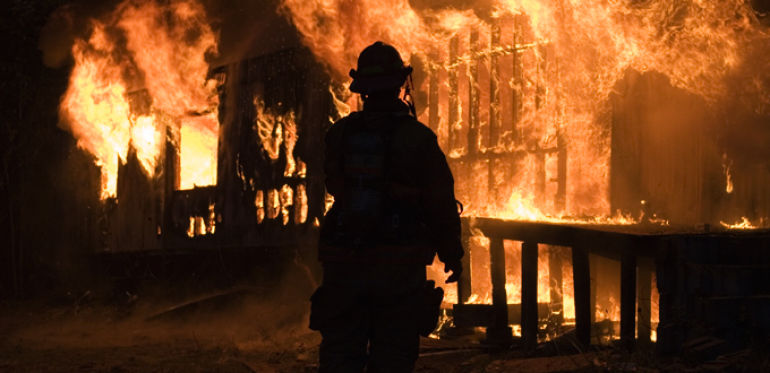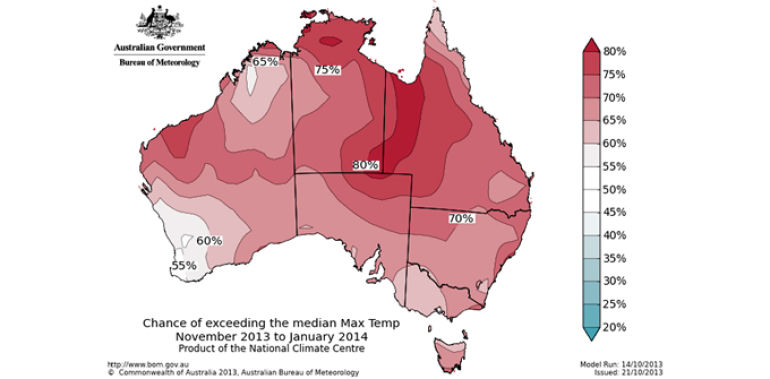How to Prepare your Home for a Bushfire
This article was originally published by Darcy Wilson @ Build.com.au : http://www.build.com.au/how-prepare-your-home-bushfires

Bushfires are a part of life in Australia, but all indications suggest they're only going to become more dramatic and more frequent as climate change leads to more extreme weather - and all signs point to the fact that we're in for a sweaty summer.
This year's raging October fires in NSW have probably already sent a shiver down your spine and superglued this issue to the front of your mind if you live anywhere where there's a fire danger. If you haven't already assessed the risk and considered how to better protect your home, now would be a pretty good time to get onto that. Small fixes can make a huge difference where bushfires are concerned...

Renovations and improvements to reduce fire risk
The Building Code of Australia has been polished up in the last few years with respect to bushfire safety - particularly with the Australia-wide adoption of Australian Standard 3959-2009 - Construction of buildings in bushfire prone areas in 2011, and particularly after the devastation that hit Victoria a few years back.
Bringing your existing home up to meet the new standard mightn't be an affordable option for everyone, but even if that's out of the question there are plenty of improvements you can make:
- Check the new building code requirements, and understand if and how your home currently differs.If nothing else, this will help you understand what's currently considered appropriate for the BAL (bushfire attack level) on your property.
- Get your house independently inspected by a building consultant for bushfire risk.
- Review the bushfire threat posed by structures around your home (flammable / timber decking, pergolas, sheds etc.). Consider ways to detach or remove these structures if they're likely to pose a threat. Have a chat to the council or your local fire authority if you need some advice about this.
- Fit good quality metal gutter guards to your guttering. This will help prevent accumulation of twigs, leaves and other fuel in your guttering.
- Install wire mesh screens on windows, doors, vents and weepholes. These will help keep flying embers out.
- Fit metal fly screens on windows and doors.
- Better yet, install metal shutters on windows.
- Seal up gaps around window and door frames using a silicon sealant.
- Install weather strips or draught excluders under side-hinged doors.
- Consider fire retardant paints for any combustible timber surfaces. Particularly if your existing paint's old or flaky.
- Seal off open areas under decks and floors. If there are gaps in your decking though, make sure there's nothing flammable underneath, and ensure that you still have access in case you need to hose out any spot fires underneath.
- Seal up any gaps in external roof and wall cladding. Ideally, have reflective foil sarking installed under roof cladding and behind weatherboards .Use mineral wool insulation to seal gaps and prevent embers from entering your roof cavity.
- Replace your windows with toughened safety glass.Install a dedicated bushfire sprinkler system to keep the exterior of your home wetted.
- Consider a private bushfire shelter or bunker (you'll need a permit for this).
Gardening and landscaping advice
How you landscape your property's a really big deal when it comes to bushfire strategy. The type of mulch you use, the types of plants you put in (or rip out) and how much effort you put into your garden can all play a big role. See below:
- Keep the lawn well mowed and watered all around house. Less than 10cm is good - the shorter the better. Fire can travel really quickly through grass, especially if it's long and dry.
- Choose plants carefully – plants with a low oil content are less likely to ignite. The Victorian CFA has a great guide to what sorts of plants are likely to be most suitable.
- Trim off low-lying branches that sit within 2m of the ground around your home. Ideally, try not to have any branches at all within a 10m radius of your house.
- Prune your shrubs so that they’re well away from the branches of mature trees. Also prune the lower branches of shrubs to give them plenty of clearance from the ground.
- Mulch with pebbles and rocks rather than using anything flammable. Especially anywhere near your house.
- Consider removing any large shrubs that are growing next to your house. These are likely to be a fire hazard.
- Remove any vines, creepers and climbers from the outside of your home. These look nice but they're absolute fire bait.
- Burn off responsibly.
General bushfire preparedness
If you choose to live where there's a chance of bushfires, you also need to stay prepared and know how you're going to respond. Below are a few of the things you can do to get organised:
- Visit the fire authority website in your state and read their advice very carefully. Most have preparedness assessment advice and tools which will help you get a better picture of what you need to know.
- Have a talk to your local fire authority. See if they have any specific advice for your home and your area - and perhaps offer to get involved if you've got the time.
- Create a bushfire survival plan so that everyone in your home knows what to do. Whether you're choosing to stay or leave (and under what circumstances), you need to clearly establish this as a part of your plan. If you want to stay and defend your house, be very clear about what that's going to be like. The DFES in WA has a great description here of what that's actually like.
- Get rid of combustible clutter from the area immediately around your home. This includes things like garden furniture, barbecues, toys, woodpiles etc.
- Clean guttering, and do your best to remove leaves and twigs from around your home and yard. Dispose of these carefully (not on your property or surrounding bushland if you can help it).
- Make sure you have good, heavy duty garden hoses that are long enough to reach the perimeter of your property.
- Store any flammable substances well away from your house. Ideally in fireproof containers.
- Make sure any LPG cylinders have their release valves facing away from the house. This is so that if they ignite the flame will be directed outwards.
- If you have a pool, put a sign up on your front fence saying ‘Static water supply’. Get a portable pump to use from your swimming pool or water tank.
- Make sure you’re appropriately insured. Insurance companies are (unsurprisingly) generous with very good advice on bushfire preparedness too...
Any other advice to help people get their houses bushfire-ready?

